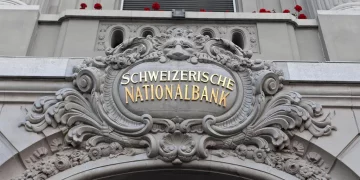The Safety Illusion: Rethinking Defensive Stocks in a New Macro Era
Defensive stocks—traditionally seen as safe havens during economic turbulence—have long occupied a central role in conservative portfolios. These are the stalwarts of the market: utility companies, consumer staples, healthcare providers, and dividend-rich telecoms. Their appeal lies in their relative insulation from the business cycle; whether the economy booms or contracts, people still need electricity, food, medicine, and connectivity. But as we move deeper into the mid-2020s, the foundational logic behind these assumptions is being tested. Structural shifts in macroeconomics, sector-specific disruptions, inflation volatility, and central bank policy evolution are all reshaping what it means to be “defensive.” Are these sectors still as safe as they once were—or have investors lulled themselves into a false sense of security? This article takes a rigorous look at the historical performance of defensive sectors, evaluates their behavior in the current economic cycle, and assesses how macro data is altering the risk-return profile of once-reliable segments of the equity market.
Looking Back to Look Ahead: How Defensives Performed in Past Cycles
A historical perspective offers critical context. In previous economic downturns—such as the early 2000s recession, the 2008 Global Financial Crisis, and the COVID-19 contraction in 2020—defensive sectors outperformed broader equity indices. During the dot-com collapse, consumer staples and healthcare offered relative stability. In 2008, utilities and healthcare proved more resilient than the cyclical-heavy financials and industrials. And in 2020, while technology staged an extraordinary recovery, traditional defensives still held their ground amid market panic. The logic was consistent: predictable earnings, essential services, lower beta, and strong dividend payouts insulated these companies from extreme drawdowns. However, each cycle is different. The nature of economic shocks, the monetary and fiscal response, and the valuation starting point all shape outcomes. For instance, in 2022–2023, as central banks aggressively hiked interest rates to combat inflation, some defensive sectors—particularly utilities and REITs—underperformed due to their high debt loads and sensitivity to interest rates. This divergence suggests that not all defensives are immune to macro headwinds and that the traditional “safe playbook” requires recalibration.
Macroeconomic Crosscurrents: What’s Different in 2025?
The economic cycle of 2025 is not like those of the past. Inflation, though retreating, remains stubbornly above central bank targets. Interest rates are elevated globally, with the U.S. Federal Reserve and ECB signaling “higher for longer” as their policy stance. Economic growth is bifurcated—while the U.S. shows relative resilience, Europe faces stagnation, and China’s slowdown weighs on global demand. Labor markets remain tight in some regions and soft in others, while geopolitical tensions—from Eastern Europe to the South China Sea—amplify uncertainty. In this complex environment, the macro data paints a mixed picture. Manufacturing PMIs are recovering slowly but remain uneven. Services remain buoyant, but margin pressures are rising. Consumer confidence is fragile, savings rates are falling, and household debt is ticking upward. For defensive stocks, these conditions present both opportunities and risks. On one hand, their steady cash flows and non-cyclical demand provide earnings visibility. On the other, their pricing power may be eroded by cost pressures, while rate-sensitive sectors could face valuation compression. In short, macro resilience doesn’t automatically translate into market outperformance—not anymore.
Consumer Staples: Still Essential, But Margin Squeeze Is Real
Consumer staples—companies producing goods like food, beverages, and household products—are textbook defensive plays. Giants like Procter & Gamble, Nestlé, Coca-Cola, and Unilever have built empires on brand loyalty and consistent demand. However, inflation has dented their margins, with input costs rising faster than prices can be passed through. In response, many firms have raised prices aggressively, only to encounter volume declines or substitution effects as consumers trade down. Emerging market exposure, once a growth lever, is now complicated by currency volatility and divergent inflation paths. Still, the sector retains several strengths: brand equity, scale efficiencies, and stable dividend policies. For long-term investors, these stocks remain appealing—especially when bought at reasonable valuations. But in the near term, expect earnings headwinds, muted top-line growth, and a heavier reliance on cost discipline to support profitability.
Utilities: Rate-Sensitive and Capital-Intensive in a Hawkish World
Utilities have historically offered low-volatility, income-rich exposure to essential services like electricity and water. Their regulated nature ensures consistent revenue, but their capital structure—often heavily debt-financed—makes them highly sensitive to interest rate changes. In the current high-rate environment, utilities face a dual challenge: higher financing costs for infrastructure projects and compressed valuation multiples. Moreover, the energy transition introduces both opportunity and risk. Utilities investing heavily in renewable energy stand to benefit from long-term secular tailwinds, but these projects often require significant upfront capital and regulatory clarity. In Europe, energy security concerns have intensified post-Russia-Ukraine conflict, driving investment into grid upgrades and LNG capacity—but also raising political risk. In the U.S., grid modernization and ESG mandates are spurring innovation, but rate approvals and return on equity negotiations with regulators add complexity. In short, utilities are not risk-free. They offer stability, yes—but in a hawkish macro regime, their appeal depends on balance sheet strength, regulatory environment, and capex execution.

Healthcare: Demographics and Innovation Versus Political Risk
Among defensive sectors, healthcare stands out for its dual appeal: it benefits from structural tailwinds like aging populations and rising global health spending, while also offering innovation-driven growth via biotechnology and medtech. Pharma giants, medical device firms, and managed care providers have delivered robust performance across cycles. In 2025, the fundamental case remains strong: chronic disease prevalence is rising, emerging market access is expanding, and R&D pipelines are yielding new therapies. However, political risk looms large. Drug pricing reform in the U.S., patent cliffs, and regulatory scrutiny in key markets present ongoing challenges. Additionally, healthcare is not immune to labor shortages, supply chain bottlenecks, and margin compression. Investors must also distinguish between sub-sectors: biotech remains volatile and sentiment-driven, while large-cap pharma offers stability but slower growth. Healthcare services, meanwhile, are navigating rising costs and reimbursement uncertainties. Thus, while healthcare remains a core defensive allocation, stock selection is paramount.
Telecom: High Yield, Low Growth, and Rising Competitive Pressures
Telecoms have long been favored by income investors for their high dividend yields and perceived stability. However, the sector has underperformed in recent years due to weak revenue growth, capex-heavy 5G rollouts, and intensifying competition. In developed markets, saturation limits subscriber growth, while in emerging markets, ARPU remains low. The shift to digital services and fiber upgrades requires sustained investment, straining free cash flow. At the same time, regulatory intervention—such as net neutrality rules and spectrum fees—adds to the burden. In 2025, telecoms face an identity crisis: they are neither growth nor pure defensives. Their utility-like services provide some insulation from economic shocks, but their equity returns have lagged due to operational leverage and capital constraints. Dividend cuts and rising debt costs have eroded investor confidence. For telecom stocks to regain their defensive luster, they must prove they can monetize digital infrastructure, manage costs effectively, and sustain payouts in a capital-intensive environment.
How Sector Rotation Reflects Macro Shifts
One way to assess whether defensives are truly “safe” is to analyze how sector rotation is unfolding. In 2024–2025, investors have shown a preference for sectors with pricing power, margin resilience, and geopolitical insulation. Energy and industrials—typically cyclical—have outperformed defensives due to supply constraints and reindustrialization trends. Tech, driven by AI adoption and cloud monetization, has defied gravity even in a high-rate context. In contrast, defensives have underwhelmed, with inflows lagging and valuation premiums compressing. This rotation suggests that investors are no longer defaulting to defensives for safety. Instead, they are seeking dynamic defensiveness—companies that can adapt, innovate, and deliver shareholder returns irrespective of traditional sector labels. This has important implications for asset allocation: rather than assuming sectors are intrinsically safe, investors must assess company-specific fundamentals, macro sensitivity, and thematic exposure. The defensive label no longer guarantees protection—it must be earned.
Active Management Over Sector Labels
In this new environment, active management is critical. Passive exposure to defensive ETFs may offer diversification, but it also embeds outdated assumptions about safety. A more nuanced approach is required: analyzing balance sheet strength, earnings stability, cost pass-through ability, and geopolitical footprint. For instance, a high-quality consumer staples firm with global pricing power and a digital strategy may be safer than a heavily indebted utility reliant on rate approvals. Similarly, a healthcare company with a strong R&D pipeline and limited policy exposure is preferable to a biotech firm with binary outcomes. Portfolio construction should reflect macro scenarios, stress-testing for rate shocks, inflation surges, and growth slowdowns. Risk-adjusted returns, rather than simple beta or volatility metrics, must drive decisions. Moreover, ESG considerations and climate risk are increasingly relevant, especially for utilities and staples. In sum, defensiveness is no longer a static classification—it is an active judgment based on evolving fundamentals.
Conclusion: Defensives Still Matter—But Context Is Everything
Defensive stocks still have a role in portfolios, but their safety cannot be taken for granted. The macro environment has changed. Inflation, interest rates, political risk, and technological disruption are reshaping the defensive landscape. Historical performance offers some guideposts, but it is not a roadmap. Investors must dig deeper—beyond sector averages and yield metrics—to identify true resilience. In a world where safety is contextual, nuance trumps simplicity. Defensive sectors remain relevant, but only those firms with pricing power, balance sheet integrity, and adaptive strategies will justify their place in a modern portfolio. Safety, in this cycle, is not about hiding in labels—it’s about being prepared for complexity and positioned for agility.














































